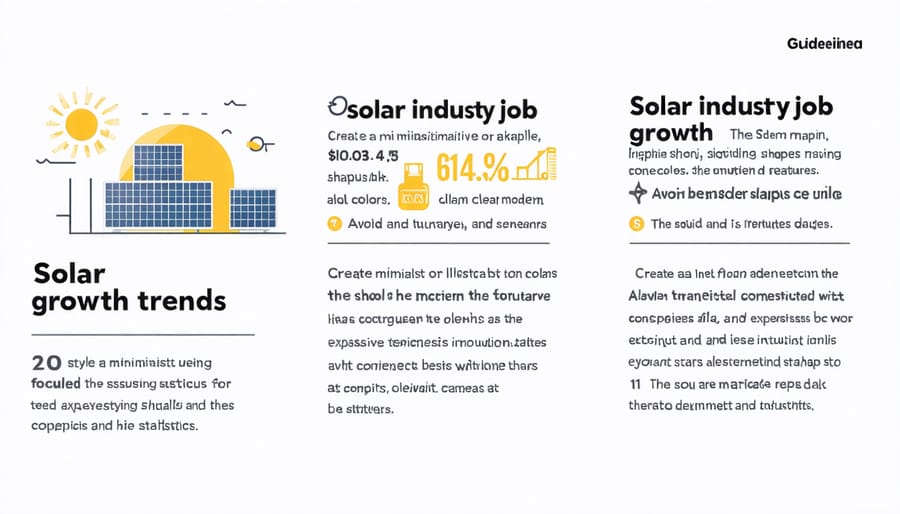Workforce development policies are reshaping the modern employment landscape, driving economic growth while addressing critical skills gaps across industries. As organizations navigate rapid technological changes and evolving market demands, effective workforce development strategies have become essential for maintaining competitiveness and ensuring sustainable economic growth. These policies, ranging from apprenticeship programs to targeted skills training initiatives, create pathways for workers to adapt to emerging opportunities while helping businesses build resilient, qualified talent pools.
Recent studies show that regions with robust workforce development frameworks experience up to 25% higher employment rates and significantly improved wage growth compared to areas without comprehensive training programs. By focusing on both immediate employment needs and long-term career development, these policies create a win-win scenario for employers and workers alike. They particularly benefit underserved communities, creating accessible pathways to high-demand careers while addressing persistent workforce inequalities.
For communities and businesses looking to thrive in today’s dynamic economy, understanding and implementing effective workforce development policies isn’t just beneficial—it’s imperative for sustainable growth and shared prosperity.
The Current State of Solar Employment
Key Solar Industry Roles
The solar industry offers diverse career opportunities across multiple sectors. Solar installers form the backbone of the industry, working directly on rooftops and ground-mounted systems to bring clean energy to homes and businesses. System designers and engineers develop efficient solar solutions, ensuring optimal performance and integration with existing electrical systems.
Sales consultants and project developers serve as the bridge between solar companies and customers, helping homeowners understand their energy needs and potential savings. Operations and maintenance technicians keep solar installations running smoothly, performing regular checks and repairs to maximize system efficiency.
The industry also needs skilled professionals in manufacturing roles, creating solar panels and components. Quality control specialists ensure products meet strict standards, while logistics coordinators manage supply chains. Administrative positions, including permit specialists and project coordinators, handle crucial paperwork and regulatory compliance.
Management roles oversee teams and operations, while research and development professionals continue advancing solar technology. Financial analysts and policy experts help shape the industry’s growth through market analysis and advocacy work.

Employment Statistics and Growth Projections
Recent labor market data shows promising trends in workforce development, with the renewable energy sector experiencing substantial growth. The Bureau of Labor Statistics reports a 52% increase in solar installation jobs over the past five years, while industrial solar sector growth continues to drive employment opportunities across manufacturing, sales, and technical positions. Projections indicate a 63% expansion in solar-related jobs by 2030, making it one of the fastest-growing employment sectors in the United States. States with robust solar initiatives are experiencing particularly strong job creation, with California, Texas, and Florida leading in new position development. These statistics underscore the importance of aligning workforce development policies with emerging industry needs to ensure a qualified labor pool for future growth.

Policy Initiatives Driving Workforce Development
Federal Training Programs
The federal government has established several comprehensive training programs to support the growing solar workforce, complementing existing solar tax incentives. The Department of Energy’s Solar Energy Technologies Office (SETO) leads many of these initiatives, providing funding for training programs across the country. Notable among these is the Solar Training Network, which connects training providers with employers and job seekers.
The Solar Ready Vets program, specifically designed for military veterans transitioning to civilian careers, offers specialized training in solar installation and system maintenance. Additionally, the Department of Labor funds apprenticeship programs that combine on-the-job training with classroom instruction, helping participants earn while they learn.
These federal programs typically cover essential skills like system design, installation safety, and electrical fundamentals. Many initiatives also include certifications aligned with industry standards, such as those established by the North American Board of Certified Energy Practitioners (NABCEP). Through these programs, participants can access career counseling, job placement assistance, and ongoing professional development opportunities.
State-Level Incentives
States across the country are implementing innovative programs to support solar workforce development, complementing existing state solar incentives. California leads the way with its Solar Training and Education Program (STEP), which provides funding for vocational schools and community colleges offering solar installation courses. New York’s Clean Energy Workforce Development initiative offers grants to training providers and supports job placement services for graduates.
Massachusetts has launched a successful Solar Career Training Partnership that connects trainees directly with local solar companies, while Illinois’s Solar for All program includes specific provisions for workforce development in disadvantaged communities. These state-level programs typically offer a combination of classroom instruction, hands-on training, and apprenticeship opportunities.
Many states also provide tuition assistance, stipends for certification exams, and job placement services. Some have even created solar career pathways in high schools, preparing the next generation of solar professionals. These initiatives are making solar careers more accessible while ensuring a skilled workforce to meet growing industry demands.
Training and Certification Pathways
Essential Certifications
Several key certifications stand out as essential credentials for solar industry professionals. The North American Board of Certified Energy Practitioners (NABCEP) certification is widely recognized as the gold standard, particularly for solar installers and technical sales professionals. Entry-level workers often start with the NABCEP Associate Program, while experienced professionals pursue the more advanced NABCEP Professional Certification.
The UL PV Installer Certification provides another valuable credential, focusing on safety standards and installation best practices. For those interested in system design, the Licensed Professional Engineer (PE) certification with a focus on photovoltaic systems opens doors to advanced design roles.
Additional valuable certifications include OSHA safety certifications, particularly the OSHA-30 for construction safety, and state-specific contractor licenses. Many employers also value specialized certifications in energy storage systems and micro-grid technology, reflecting the industry’s evolving needs and technological advancement.
Training Resources
A wide range of training resources is available to support workforce development in the solar industry. Community colleges across the country offer solar installation certification programs, combining hands-on experience with classroom learning. Many technical schools provide specialized courses in photovoltaic system design and maintenance, while online platforms offer flexible learning options for working professionals.
The North American Board of Certified Energy Practitioners (NABCEP) provides industry-recognized certifications that have become the gold standard for solar professionals. Local workforce development boards frequently partner with solar companies to create apprenticeship programs, giving participants paid on-the-job training opportunities.
Additionally, government-funded programs through the Department of Labor and Department of Energy offer free or low-cost training initiatives, particularly focusing on veterans, displaced workers, and underserved communities. These programs often include job placement assistance and ongoing professional development support to ensure long-term career success in the solar industry.

The solar industry continues to offer exciting opportunities for career growth and professional development. With numerous training programs, apprenticeships, and certification paths available, entering the solar workforce has never been more accessible. Local community colleges, trade schools, and industry organizations regularly offer comprehensive training programs to help individuals gain the necessary skills and credentials. Many states also provide funding assistance and scholarship opportunities for solar-specific education and certification programs. As the industry expands, positions ranging from installation technicians to project managers remain in high demand. By taking advantage of available resources, networking with industry professionals, and staying informed about emerging technologies, aspiring solar professionals can position themselves for successful, rewarding careers in this growing field. The future of solar workforce development looks bright, with continued policy support and industry growth creating sustainable career opportunities for years to come.









